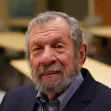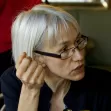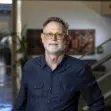Exclusives
BLOG POST
Bridging Form and Function
David Sucher argues that France's spectacular new bridge is not just a feat of engineering -- <a href="http://citycomfortsblog.typepad.com/cities/2004/12/quite_the_contr.html">it's architecture</a>.<br /> <br /> <blockquote>"...I'd suggest that it qualifies as architecture, maybe even top-notch architecture..."</blockquote><br /> <br /> Brian Micklethwait wonders about the <a href="http://www.brianmicklethwait.com/culture/001740.shtml">reason</a> for building the bridge: <br /> <br /> <blockquote>"Economically it looks crazy to me. A few more curves on the road and they could surely have saved themselves billions."</blockquote>
FEATURE
State of the Blog 2004
Weblogs are helping the World Wide Web realize its potential, writes Planetizen co-founder and editor, Abhijeet Chavan.
BLOG POST
Cities, EV-DO, WiMAX and Wireless?
Walt <a href="http://online.wsj.com/article/0,,personal_technology,00.html">writes</a> (subscription required, unfortunately) in the <i>Wall Street Journal</i>: <br /> <br /> <blockquote>"The most important development this year in U.S. wireless communications wasn't the headline-grabbing mergers of various wireless carriers. It was the quiet, gradual rollout by Verizon Wireless of a technology called EV-DO, which for the first time is providing broadband-speed Internet access over the air from anywhere in the cities where it has been deployed."</blockquote>
BLOG POST
Neither City Mouse nor Country Mouse
Hey, look, it's another way to look at city/non-city living! It's from the <em>New York Times Magazine's</em> <a href="http://www.nytimes.com/2004/12/12/magazine/12MICROPOLIS.html?oref=login">Year in Ideas</a> issue (reg. req'd). Here it is: your moment of geographic zen.<br /> <br /> <img src="http://www.planetizen.com/tech/files//12micr.650.jpg" alt="Micropolises" /> <br /> <br /> What does it say about you if you live in a dark green region? Um...that you shop at WalMart? That you have satellite TV? That you're more likely to drive a truck?<br /> <br /> I've read the <em>Times</em> article and I still don't really get it.
BLOG POST
Discovering Liferay
<img src="http://www.planetizen.com/tech/files//liferay_thumb1.gif" alt="Liferay thumb" align="right"/>I just discovered <a href="http://www.liferay.com/home/index.jsp">Liferay</a>, an open source portal, after reading <a href="http://radio.weblogs.com/0110120/">David Fletcher's discussion</a> of Portal Architectures on his blog.<br /> <br /> Although I have seen and evaluated <a href="http://phpwebsite.appstate.edu/">PHP Website"</a>, I haven't seen see Liferay, which is equally -- perhaps more -- impressive.
BLOG POST
'Computer of The Future' Photo Is A Hoax
According to <a href="http://www.snopes.com/">Urban Legends References Pages</a>, the widely circulated 1954 photograph of what a home computer in 2004 would look like is an Internet hoax. The website provides <a href="http://www.snopes.com/inboxer/hoaxes/computer.asp">details</a>: <br /> <blockquote><br /> Although the photograph displayed could represent what some people in the early 1950s contemplated a "home computer" might look like (based on the technology of the day), it isn't, as the accompanying text claims, a RAND Corporation illustration from 1954 of a prototype "home computer." The picture is actually an entry submitted to an image modification competition, taken from an original photo of a submarine maneuvering room console found on U.S. Navy web site, converted to grayscale, and modified to replace a modern display panel and TV screen with pictures of a decades-old teletype/printer and television (as well as to add the gray-suited man to the left-hand side of the photo).</blockquote>
BLOG POST
The Santa Fe Trail
Albuquerque, NM -- I've been in Santa Fe, 60 miles north of the airport from which I'm now writing, for the past three days. Was attending a conference put on by a CIA think tank, and even though I'm a reporter I think it's pretty badass that I'm actually not allowed to tell you anything about the conference. Nyah nyah.<br /> <br /> But Santa Fe put me in mind of a book on my shelf that I haven't read yet, <a href="http://www.amazon.com/exec/obidos/tg/detail/-/0300078463/qid=1102535123/sr=1-4/ref=sr_1_4/002-9877415-8018419?v=glance&s=books"><em>The Tourist City</em></a>.
BLOG POST
More wireless believers
From the Philadelphia Inquirer<br /> <br /> <blockquote>"Dream isn't deleted yet. What happens when you take Mayor Street's trailblazing vision of Philadelphia as one huge wireless Internet hot spot and suddenly cool it to the temperature of long-dead star? The vision dies, and with it a shining chance to showcase the city as hip and technology-friendly.<br /> Also shot would be the chance to redefine the "City of Brotherly Love" as a community that reaches across the digital computer divide. The vision doesn't die, though, if enough people start chanting - Neverland-style - that they believe... they believe... they believe."</blockquote>
FEATURE
The Federal Surface Transportation Program: The Next Four Years
Transportation policy often passes under the radar of political analysts and media commentators. Yet mobility is too important to the economic vitality of the nation to remain invisible in the policy dialogue.
BLOG POST
Planning For Your Home Computer of the Future
Planning 50 years out is never easy -- in planning -- or in technology.<br /> <br /> Thanks to <a href="http://www-rcf.usc.edu/~pgordon/">Peter Gordon</a> and <a href="http://www-rcf.usc.edu/~dowell/">Dowell Myers</a> for the picture. <br /> <br /> <img src="http://www.planetizen.com/tech/files//Rand_Home_Computer_1954.jpg" alt="Computer of the Future" />.<br /> <br />
BLOG POST
Top Word For 2004: 'Blog'
Merriam-Webster Inc. announced that the word "blog" was the "<a href="http://www.cnn.com/2004/TECH/internet/11/30/words.of.the.year.reut/index.html">most looked-up word</a>" [CNN] this year. The word will be a new entry in the next edition of the Merriam-Webster Collegiate Dictionary.<br /> <blockquote><br /> A four-letter term that came to symbolize the difference between old and new media during this year's presidential campaign tops U.S. dictionary publisher Merriam-Webster's list of the 10 words of the year.</blockquote>
BLOG POST
Economics = less emissions (Peter Gordon* will be so proud)
The best English-language science magazine, <em>New Scientist,</em> reports this week that London's congestion pricing -- 5 pounds to drive into downtown -- lowered emissions last year. The story's not online yet (next week it'll be in the archive at <a href="http://www.newscientist.com">New Scientist.com</a>) but I've thoughtfully copied out the salient bits:<br /> <blockquote>...nitrogen oxides and particulates fell by 16 per cent. A fall in the number of cars and an increase in speed of 4 kilometres an hour were responsible for three-quarters of this fall, with greener technology in cars making up the rest. Carbon dioxide emissions fell by 19 per cent. Even an increase in the number of buses, whose diesel engines are among the worst polluters, could not offset the drop, partly because modern buses are fitted with particulate traps.</blockquote>
BLOG POST
Developing an Open Source Content Management Strategy For E-Government
<img src="http://www.planetizen.com/tech/files//20041126-steins-chavan-egov_01.jpg" align="right" alt="Web-based communication in e-government" /> In case you missed this on Planetizen, Abhijeet has posted his presentation and proceedings paper, <a href="http://www.urbaninsight.com/~chavan/2004/urisa-cms/">Developing an Open Source Content Management Strategy For E-Government</a> from his presentation at the <a href="http://www.urisa.org/">Urban and Regional Information Systems Association</a> 42nd annual conference.
BLOG POST
In the Air Tonight...Whoa Oh
Journalistic truism #539: Headlines that reference 1980s pop songs draw in readers. Proof? Well, you're here, aren't you?<br /> <br /> Just some musings about air pollution in honor of Thanksgiving. And no, I don't really get the connection, either.<br /> <br /> First, CNN <a href="http://www.cnn.com/2004/TECH/science/11/24/environment.aviation.pollution.reut/index.html">reports</a> that <em>five years</em> worth of negotiations between state and local agencies and airports have failed to result in emissions cutbacks for airports.
BLOG POST
Wi-Fi and Quality of Life
Cities are planning major wireless infrastructure projects to provide city-wide wireless access. Taipei wants to build the <a href="http://story.news.yahoo.com/news?tmpl=story&cid=575&ncid=738&e=6&u=/nm/20041119/wr_nm/tech_taiwan_cybercity_dc">world's largest "hotspot"</a> providing outdoor Internet access throughout the city. [Via <a href="http://slashdot.org/articles/04/11/19/1448250.shtml?tid=193">Slashdot</a>]<br /> <br /> The article quotes a Taipei city official who talks about the Wi-Fi project as not only beneficial to businesses but also to improve residents' <em>quality of life</em> [Italics mine].
BLOG POST
Cities Kill!
I keep saying, urban life is not for the faint of heart. New article in the <em>Journal of the American Medical Association</em> (<a href="http://jama.ama-assn.org/cgi/content/abstract/292/19/2372?view=abstractfp=2372&vol=292&lookupType=volpage">here's</a> the abstract; fulltext is subscriber-only) says that elevated ozone events correlate to increased deaths. <br /> <br /> <img src="http://www.planetizen.com/tech/files//jtw40039f2.gif" alt="" /> <br /> <br /> They looked at 95 cities; here's the salient bit from the abstract:<br /> <blockquote>A 10-ppb increase in the previous week�s ozone was associated with a 0.52% increase in daily mortality (95% posterior interval [PI], 0.27%-0.77%) and a 0.64% increase in cardiovascular and respiratory mortality (95% PI, 0.31%-0.98%).</blockquote>
BLOG POST
What if you could really see what it would look like?
<body>The Sierra Club is using photomontage images online to demonstrate what "smart growth" can look like and feel like <a href="http://www.sierraclub.org/sprawl/community/transformations/index.asp" target="_self">http://www.sierraclub.org/sprawl/community/transformations/index.asp</a>. Several photos show the difference between existing sprawl and potential smart growth solutions. <br><br>Photomontage is a visualization technique that is becoming increasingly popular as a tool to demonstrate what the future might look like under different design or build-out scenarios.
BLOG POST
Mapping Election Results
A color-coded map of how different states voted in the 2004 U.S. presidential election was probably the most common graphic used to convey the election results in a single picture by the news media. The following graphic by CNN uses color to highlight the states that "switched" parties.<br /> <br /> <p align="center" ><br /> <img src="http://www.planetizen.com/tech/files//20041105-cnn-national-change.gif" alt="CNN: 2004 Election Results by State" /><br /> <br /><br /> CNN: <a href="http://www.cnn.com/ELECTION/2004/pages/results/president/">2004 Election Results by State</a><br /> </p><br /> <br /> The New York Times had a more informative map that took into account population density.
BLOG POST
Digital Dispersion
In which metropolitan areas did businesses move to adopt the Internet most quickly? <br /> <br /> A July, 2003 research paper from Carnegie Mellon University, co-authored by Chris Forman, Avi Goldfarb and Shane Greenstein, explores the extent of commercial adoption of the Internet in the nation's 50 largest metropolitan areas. <br /> <br /> The paper -- <a href="http://www.andrew.cmu.edu/user/cforman/research/digitaldispersion--July%2031.pdf"><br /> "How did Location Affect Adoption of the Commercial Internet?-Global Village, Urban Density and Industry Composition"</a> --explores the connection between industry composition and city size in explaining business use of the Internet.
Pagination
Heyer Gruel & Associates PA
JM Goldson LLC
Custer County Colorado
City of Camden Redevelopment Agency
City of Astoria
Transportation Research & Education Center (TREC) at Portland State University
Camden Redevelopment Agency
City of Claremont
Municipality of Princeton (NJ)
Urban Design for Planners 1: Software Tools
This six-course series explores essential urban design concepts using open source software and equips planners with the tools they need to participate fully in the urban design process.
Planning for Universal Design
Learn the tools for implementing Universal Design in planning regulations.


































